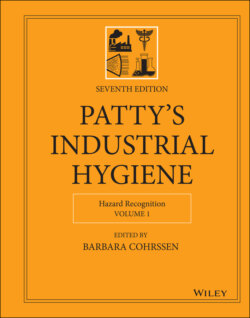Читать книгу Patty's Industrial Hygiene, Hazard Recognition - Группа авторов - Страница 70
7.3.3 Analysis
ОглавлениеThe first canon of joint Code of Ethics for the Professional Practice of Industrial Hygiene states that industrial hygienists shall “practice their profession following recognized scientific principles with the realization that the lives, health and well‐being of people may depend upon their professional judgment and that they are obligated to protect the health and well‐being of people.”19 Even more clearly stated, the Code of Ethics for registered Occupational Hygienists and Occupational Hygiene Technologists in Canada declares that Registered Occupational Hygienists shall “place the health and safety of workers above all other interests in the performance of their professional work.”20
Even though George may not be a “decision‐maker” within his company, he can be an advocate for changes in the business model and sourcing policies to address the underlying issues that have generated both fatal disasters and repeated failing CSR audits. Among the policies he can promote are reasonable prices that allow factory management to pay workers according to the law; reasonable delivery dates and reduced last‐minute change orders; and long‐term partner relationships with suppliers.
To generate accurate audits of factories in Bangladesh, George can advocate for company membership (with 190+ other apparel brands) in the Bangladesh Accord for Fire and Building Safety, as well as promoting factory‐level efforts to address all health and safety issues in the workplaces. George can advocate for an Accord‐like agreement with other brands sourcing from India and Pakistan, which have factory conditions and hazards similar to Bangladesh.
If George has conducted his own audits of facilities that conflict with the findings of the third‐party auditor, George has several options: he can share his findings with his own managers and the management of the inspected factory to seek correction of the hazards he identified on site; he can request more oversight of the third‐party monitor involved in this audit, and more scrutiny of the third‐party monitoring system as a whole; and/or the disqualification of the third‐party monitor involved here from future work with his company.
While supporting these private‐sector initiatives, George can promote the idea of apparel industry support to government agencies who have the ultimate responsibility for establishing and enforcing a “level playing field” for all garment factories in their countries.
As part of a partner relationship with its supplier factories, George can advocate for a capacity‐building approach with managers on health and safety issues. He can also champion genuine participation of workers in the OHS and CSR programs by representative worker members who have the authority, paid release time, information, and training required to play their essential role in factory health and safety programs.
